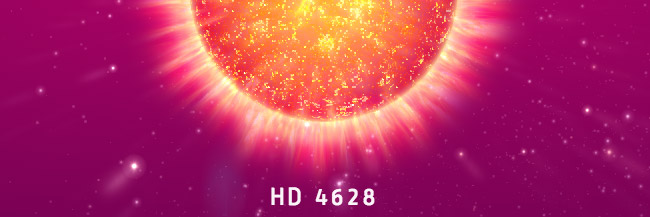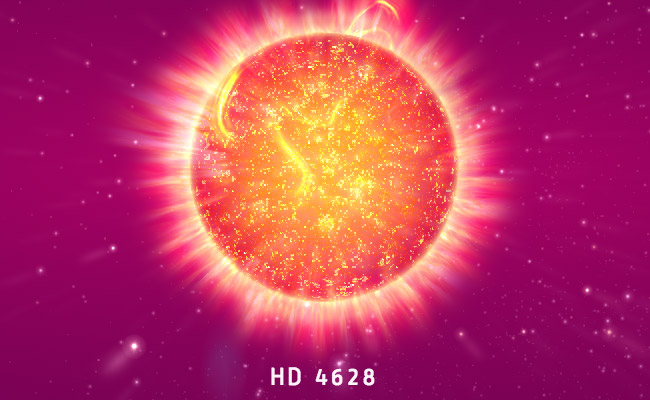HD 4628 – Star Facts

Although there is no specific history related to HD 4628, the constellation Pisces was catalogued in the 2nd century by the Greek astronomer, Ptolemy, so it is safe assume that this celestial body has been known for quite some time. Pisces itself represents the mythological Roman beings (Venus and Cupid) who transformed themselves into fish to escape the clutches of Typhon the monster.
Constellation Home
HD 4628 is found in the constellation Pisces and is also known as 96 G. Piscium, Gliese 33, HIP 3765 and Wolf 25. It is located approximately 24 light-years from Earth; 141 trillion miles (226 trillion kilometres).
Observation
The apparent magnitude of this star is rated at 5.75, making it just viewable by the naked eye in a dark sky.

Star Characteristics and Features
HD 4628 is considered a main-sequence dwarf star. It shines with a red-orange colour and is slightly smaller in mass and width than our Sun. This star also has a relatively high proper motion. In addition, HD 4628 was once listed as a double star, with a flare star companion; however, upon further observations this theory has been disproved.
Brightness of the Star
This star is slightly dimmer than our Sun and is considered a K2.5V spectral type. As mentioned before, it can be seen with the naked eye, but would be better observed through a telescope. Observers in the Northern hemisphere can see its home constellation of Pisces better in the Autumn months.
History and Mythology
Although, there is no specific history related to HD 4628, the constellation Pisces was catalogued in the 2nd century by the Greek astronomer, Ptolemy, so it is safe assume that this celestial body has been known for quite some time. Pisces itself represents the mythological Roman beings (Venus and Cupid) who transformed themselves into fish to escape the clutches of Typhon the monster.
HD 4628 is not only part of the Pisces constellation, it contributes its qualities to give “the fish” part of its striking shape and still holds an interest to star-gazers all over the world.
